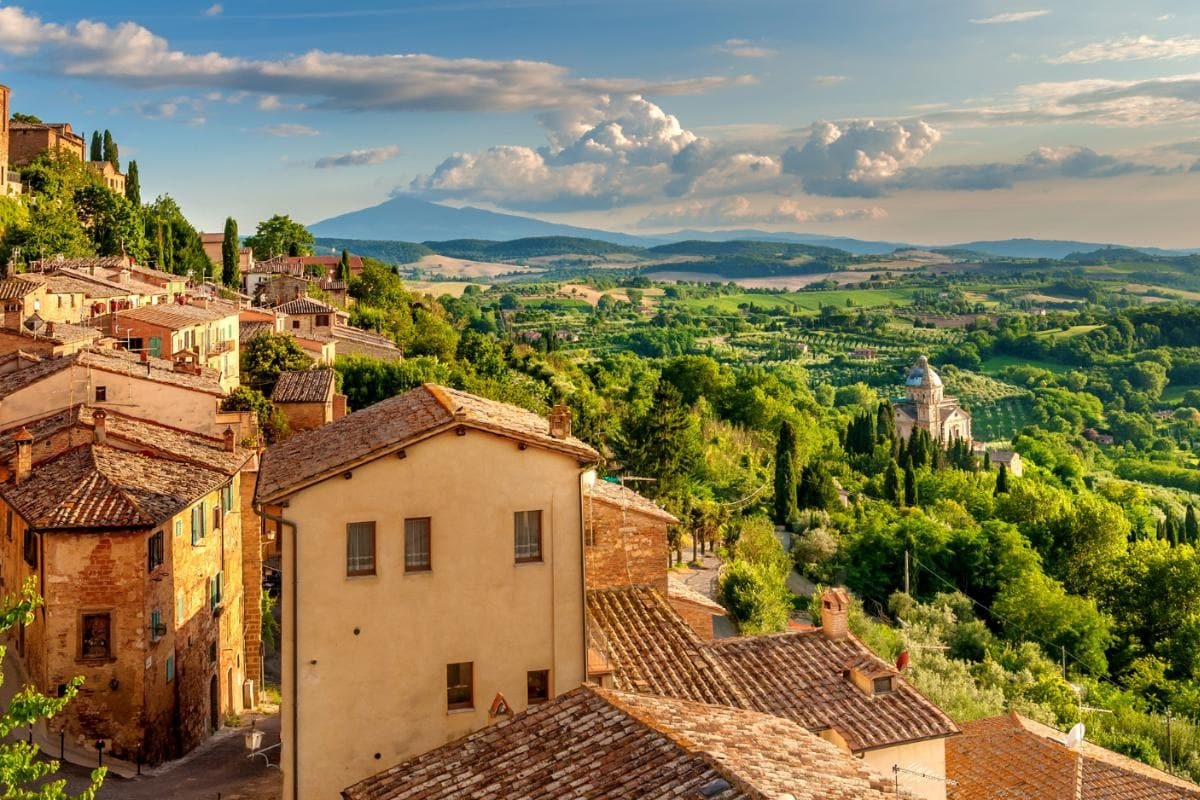Tuscany is a true gem of Italy, attracting travelers from all over the world with its unique blend of culture, nature, and culinary traditions. Here, history comes alive, works of art captivate the imagination, and vineyards and olive groves create breathtaking landscapes. For centuries, Tuscany has inspired artists, poets, and romantics, and every corner of this region hides many secrets and extraordinary stories. If you want to learn more about this unique region, explore these fascinating and surprising facts you may not have known.
- Tuscany is located in the central part of Italy and has access to the Tyrrhenian Sea. Its area exceeds 22,000 square kilometers, and the landscapes range from mountains and rolling hills to fertile plains and a beautiful coastline.
- The capital of the region is Florence, the cradle of the Italian Renaissance. It was here that geniuses such as Dante Alighieri, Leonardo da Vinci, Michelangelo, and Botticelli were born, and the narrow streets still preserve the atmosphere of an era of great discoveries.
- Tuscany is home to more than 120 nature reserves and parks. The Apennine National Park, the Orcia Valley, and the Maremma coastline are particularly remarkable, where rare animal and plant species can be found.
- The region is famous for its picturesque hills, which have become a symbol of the Italian landscape. Iconic photos of Tuscany often show endless fields, cypress alleys, and old farmhouses that embody the spirit of rural Italy.
- There are over 700 museums and art galleries in Tuscany, including the Uffizi Gallery, the Pitti Palace, and the National Archaeological Museum in Florence. Here you can see masterpieces by Raphael, Caravaggio, Titian, Giotto, and many other great masters.
- The architectural pride of the region is the famous Leaning Tower of Pisa, one of the most recognizable symbols of Italy. This tower is part of the Piazza dei Miracoli complex, which also includes the cathedral and baptistery.
- In Siena, the historic Palio horse race is held every year, attracting thousands of tourists. This colorful event is an important part of local culture and keeps medieval traditions alive.
- Tuscany is famous for its cuisine, especially dishes such as Florentine steak, ribollita soup, pappardelle pasta, and polenta. Winemaking is also highly developed—legendary Chianti wine originates from this region.
- Tuscan vineyards cover over 60,000 hectares, making the region one of the leading producers of red wine in Italy. Besides Chianti, Brunello di Montalcino, Vino Nobile di Montepulciano, and so-called Super Tuscan wines are also produced here.
- Olive groves cover almost as much land as the vineyards. Tuscan olive oil is highly valued for its delicate aroma and flavor and is often used to dress salads, pasta, and bread.
- One of the unique features of the region is its thermal springs. Resorts like Montecatini Terme, Saturnia, and Bagno Vignoni have been famous since the Roman Empire and still attract thousands of people seeking relaxation and wellness.
- Many towns and villages in Tuscany have preserved medieval walls and fortresses. Montepulciano, Volterra, and San Gimignano are famous for their towers, narrow streets, and the unique atmosphere of past centuries.
- Florence is a UNESCO World Heritage Site, and its historic center is considered one of the best preserved in Europe. The Cathedral of Santa Maria del Fiore with Brunelleschi’s dome is a true architectural masterpiece.
- Tuscany is the birthplace of great poets, artists, musicians, and even scientists. Galileo Galilei, who revolutionized world science, was also born in Pisa.
- The tradition of celebrating Carnival is especially popular in Viareggio. Colorful costumes, stilt walkers, giant floats, and lively music create a festive atmosphere for both locals and visitors.
- Many Tuscan towns are located on hills, which historically protected them from invasions and today provide magnificent panoramas. The most famous views can be enjoyed from Pienza, Cortona, Arezzo, and San Miniato.
- The region is renowned for its crafts: ceramics, embroidery, artistic glass, furniture making, and bookbinding. Local artisans preserve ancient traditions and often pass their skills from generation to generation.
- Tuscany attracts lovers of active recreation. Here you can go trekking in the mountains, cycle among the vineyards, and enjoy windsurfing or swimming on the coast.
- The region has more than 4,000 villas and castles, many of which are open to visitors or operate as hotels. Notable examples include Castello Banfi, Villa Medici, and the Castle of Brolio.
- Festivals and fairs take place all year round in Tuscany. These are celebrations of wine, olive oil, chocolate, crafts, as well as historical reenactments and theatrical performances.
These fascinating facts about Tuscany confirm that this is not just an ordinary region, but a true cultural and natural phenomenon. Its richness amazes even experienced travelers, and the beauty of the landscapes and the originality of its culture leave lasting impressions. Many incredible facts about Tuscany are still waiting to be discovered, and every visit to this region can become a source of new inspiration and creativity.





